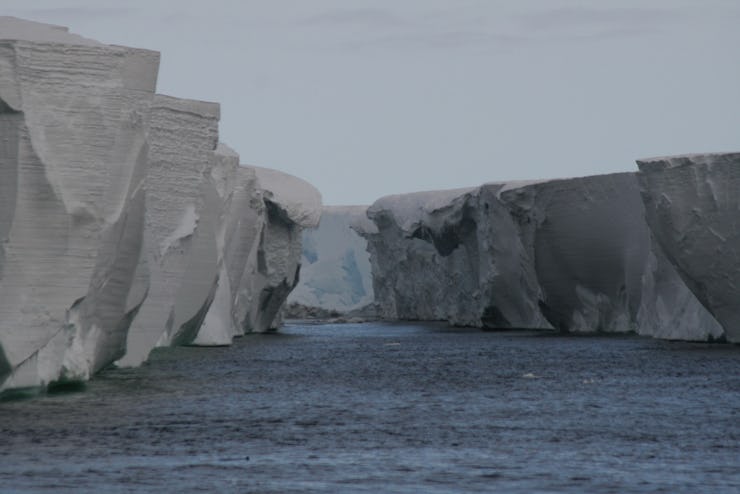The Larsen C Iceberg, by the Numbers
This is how big it really is.

A massive iceberg just split from the Larsen C ice shelf in Antarctica. It’s the third largest floating chunk of ice humans have ever documented. The iceberg that sank the Titanic looks like a single snowflake in comparison. While we don’t have great numbers on that one, it was an estimated 200-400 feet long; The Larsen C ‘berg is about 100 miles long.
The enormity of the iceberg has left journalists everywhere grasping for comparisons that will help people understand just how huge this thing really is. Climate Central visualized the iceberg as a giant snowball (its actual shape is closer to a pancake) and placed it next to photos of cities and landmarks — including New York City, Mt. Rainer, and the Grand Canyon — to give a sense of its heft.
Some comparisons are more helpful that others — and some are flat out wrong. Business Insider has repeatedly insisted that the volume of ice could fill Lake Michigan, when it, in fact, would only go up about a quarter of the way. A National Geographic video says the iceberg is as big as NYC, when it’s actually seven times as big.
In the spirit of getting things straight, here’s a not-at-all-comprehensive list of things you could compare with the iceberg, by area, mass, and volume.
By Area
- More than half the size of Hawaii’s Big Island, which is 4,029 square miles.
- Four times the size of Guam, which has an area of 210 square miles.
- Bigger than the country of Trinidad and Tobago, at 1,980 square miles.
- Almost as big as the city of Shanghai, with an area of 2,450 square miles.
- Seven times as big at New York City, which has an area of 300 square miles.
- More than a million NFL football fields.
By Mass
The iceberg weighs an estimated trillion metric tons. That’s:
- About 1,500 times heavier that the annual production of coal in the United States, which pulled out 660 million metric tons in 2016.
- 228 times heavier than the global production of crude oil, which clocked in at 4.4 billion tons in 2016.
- 100 times the weight of all the concrete poured around the world each year.
- As much as 2.8 million Empire State Buildings.
- Nearly 20 million times the weight of the Titanic itself. Perhaps 100 million times (a rough estimate) the weight of the iceberg that sank that ship.
By Volume
The iceberg contains 277 cubic miles of ice. That’s:
- Enough to fill Lake Erie twice, and then some. The smallest of the Great Lakes has an estimated volume of 120 cubic miles.
- Enough to fill Lake Michigan, with a volume of about 1,180 cubic miles, about a quarter of the way.
- More than the volume of lava ejected by the most recent supereruption of the supervolcano in Yellowstone National Park, 640,000 years ago. That event saw 240 square miles of magma spew from the belly of the Earth.